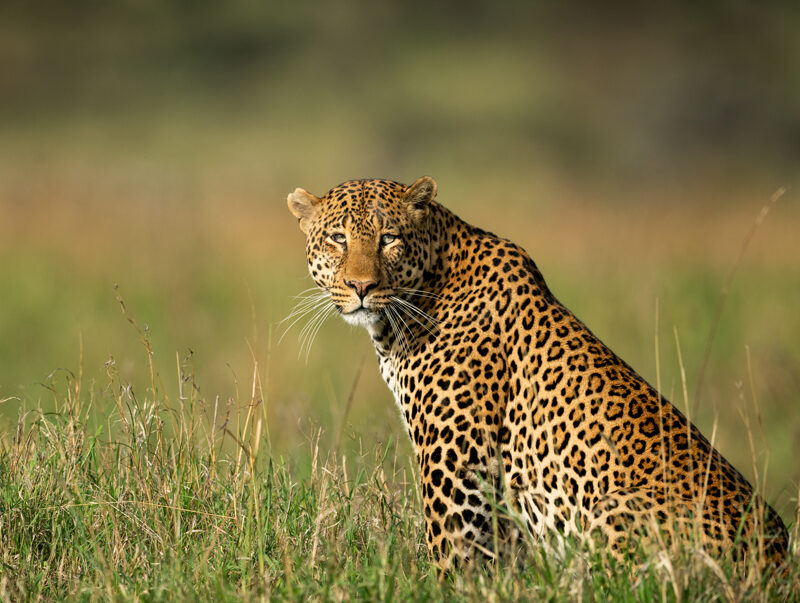African Leopard
Species Data
Class: Mammalia
Order: Carnivora
Family: Felidae
Scientific Name: Panthera pardus pardus
IUCN Red List status: Vulnerable
Description
The African Leopard is widely distributed across Africa, but the population of this sub-species is decreasing and it has been classified as Vulnerable by IUCN’s Red List.
Like most felines, African Leopard are incredibly athletic predators and they can run up to 58 miles per hour and leap an impressive 6 metres forward through the air.
The coat of the African Leopard is covered with rosette-shaped markings. The rosettes on the leopards coat do not contain spots, unlike those of their new world relative the Jaguar. The average lifespan of African Leopard is 10 to 12 years in the wild.
Behaviour
African Leopards are predominantly nocturnal, solitary animals and spend most of their time in trees, out of the way of other predators which may pose a threat. Their diet tends to adapt to prey availability and the presence of competitors – they hunt a wide variety of animals which can range from small mammals to large ungulates, reptiles to birds and sometimes even insects.
Where competitors are present, leopard will hide their prey under thick vegetation or hoist it into the branches of a tree. They are very strong climbers, with shoulder blades that have a special attachment site for stronger climbing muscles. A female typically gives birth to a litter of two or three cubs, which stay with her for about two years as she teaches them how to hunt.


Habitat
Native to more than 35 African countries, leopards occur in the widest variety of habitats among any of the Old World Cats – from desert to grasslands and tropical forest. In Cameroon, leopard are found in northern and southern sections of the country, but their distribution is thought to be scattered due to habitat fragmentation and illegal hunting for bushmeat.
Threats and Conservation
African Leopard have suffered from habitat loss and fragmentation, increased illegal wildlife trade, decline in prey and poorly managed trophy hunting.
Prey species are increasingly under threat from an unsustainable bushmeat trade across large parts of Africa’s savannas. Leopards are also killed illegally for their widely sought-after skins and other body parts used for ceremonial purposes.
African Leopard have limited levels of ecological resilience to human-caused habitat fragmentation, and as a result are more restricted to conservation areas – future decline is anticipated unless conservation efforts are undertaken.
